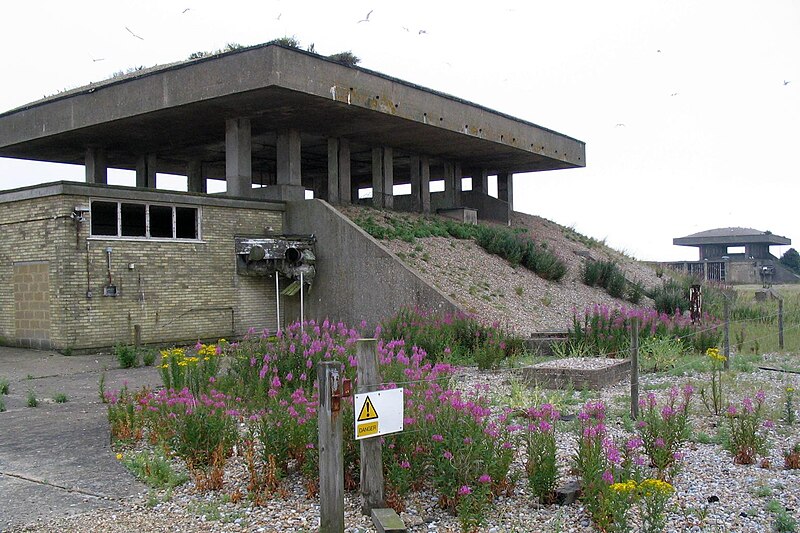National Trust
wild and remote shingle spit
stunning landscape
history that will both delight and intrigue.
internationally important nature reserve
often forbidding,
uncompromising about its past and in protecting its future.
15% of the world's reserve of coastal vegetated shingle
the best preserved shingle ridges in Europe
fragile
dangerous debris, including bombs, still remains.
Marsh
Creek
Shingle
Wiki
It is a place of strange contrasts. For the National Trust, its 'elemental nature' contrasts with the 'inherent dangers' of this place, a 'hostile and potentially dangerous site'. Military structures – the Bomb Ballistics Building, the Black Beacon, the 'pagodas' used for explosive design – have been converted into viewing spots. This is not a celebratory site, however; there is ambivalence and doubt here, with regard to what is being physically and ideologically conserved
approximately 10 miles (16 km) long
a total area of approximately 2,230 acres (900 ha).
Forty percent of this (890 acres) is shingle, 25 percent (556 acres) tidal rivers, mud flats, sand flats, and lagoons, eighteen percent (400 acres) grassland, and fifteen percent (330 acres) salt marsh.
The size and shape of the spit fluctuates over time

Buildings
Dan Pearson
The highlight of the weekend was a guided walk of the National Trust's Orford Ness. This internationally important nature reserve is the largest expanse of vegetated shingle habitat in Europe and, as such, supports a variety of flora and fauna. The Ness was occupied by the military for much of the 20th century and the shingle is littered with the remains of buildings and bomb test sites, which now take on a sculptural quality. The tension between the natural and the manmade, and the eerie atmosphere created by the oceans of pristine shingle is reminiscent of Dungeness, although here there are no houses and no inhabitants, apart from hares and sea birds.
Land being reclaimed by nature?
Galley
the ultimate place to get away from it all and clear your mind. It is the biggest shingle spit in Europe and was a top-secret military site from 1913 to the 1980s. Whether you re just soaking up the atmosphere of the wild open space, bird watching or imaging James Bond type scenarios it is a very special place.
EADT24
the public was kept away until the 1990s (a ruling that helped fan lots of wild speculation about actual nuclear weapons being tested there in the past).
“The combination of desolation, debris and weapons of mass destruction made it a threatening place for many of those who came to consider whether it might be a suitable acquisition for the National Trust
Orford Ness offered “monuments to the realities of twentieth-century history: unimaginable destruction, extermination as an industrial process, war directed as much at civilian populations as at opposing warriors
After 80 years off-limits, the site opened to the public in 1995 – the National Trust’s centenary year.
“The response to Orford Ness has been unusual,” suggests Merlin. “It is as though poets and painters have taken up where the Suffolk poet George Crabbe and Turner had left off.” (JMW Turner had in the summer of 1824 taken a boat from Aldeburgh down the Ore, filling page after page of a sketchbook with pencil drawings that inspired a series of watercolours.)
“One of the most thoughtful responses is in Christopher Woodward’s book In Ruins. He had been particularly struck by the Trust’s decision to allow the concrete pagodas to deteriorate gradually, without attempting to prevent or even slow down the rate of decay . . .”
Woodward wrote that “In a new and hopefully more peaceful century the ruins would crumble into extinction in exposure to the wind and waves, as if the earth was being purified by nature.”
No comments:
Post a Comment